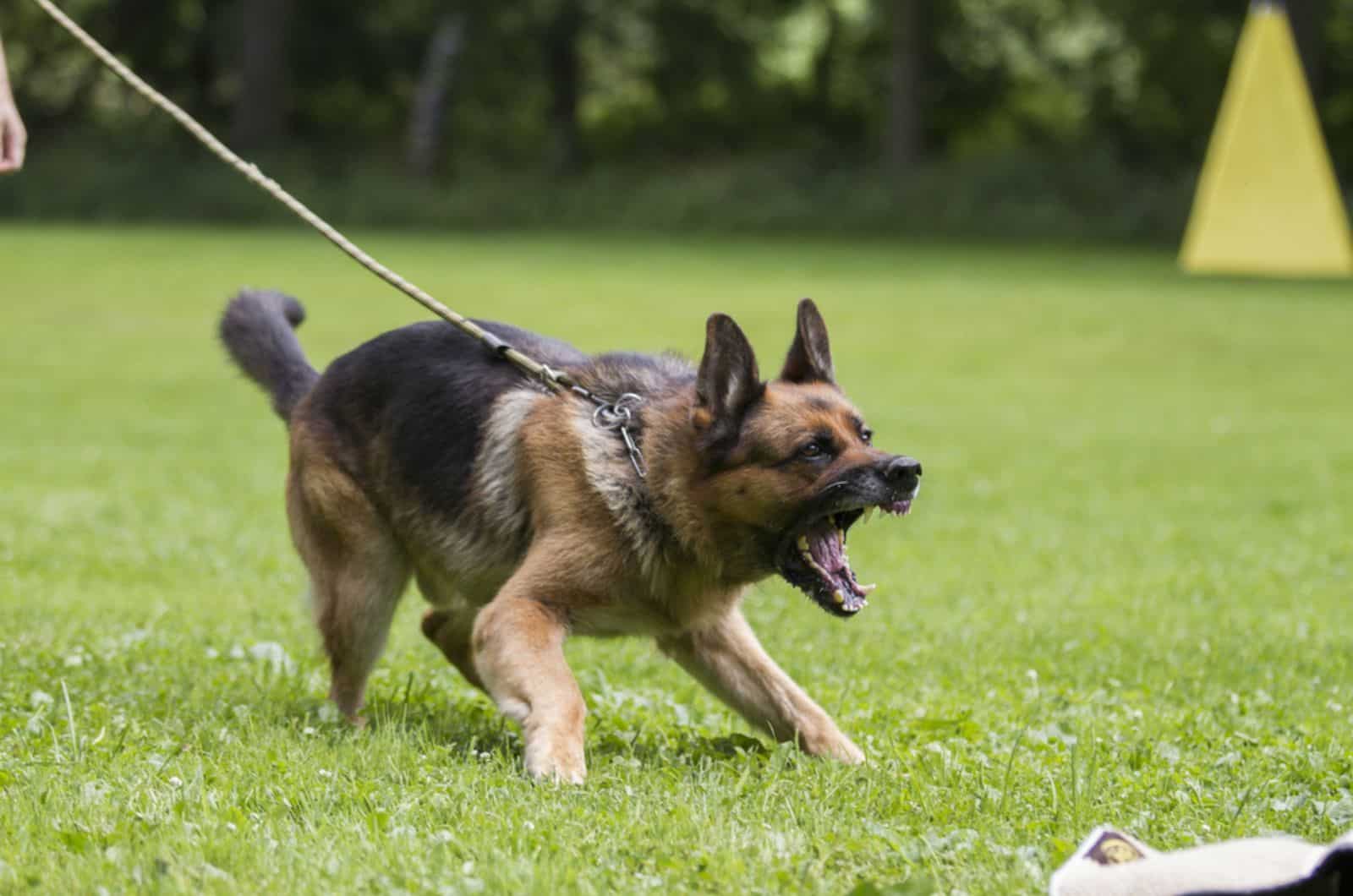Is your beloved canine companion showing some odd behaviors that make you scratch your head? Could it be that he is afraid, or perhaps it’s simply not his day?
Fear aggression in German Shepherds is no joking matter! From aggressive chewing, excessive barking, growling, and panting, there are many signs to look out for.
It’s time to decode the mystery of this behavior and how to take control! Are you ready? Let’s go!
1. Growling And Barking
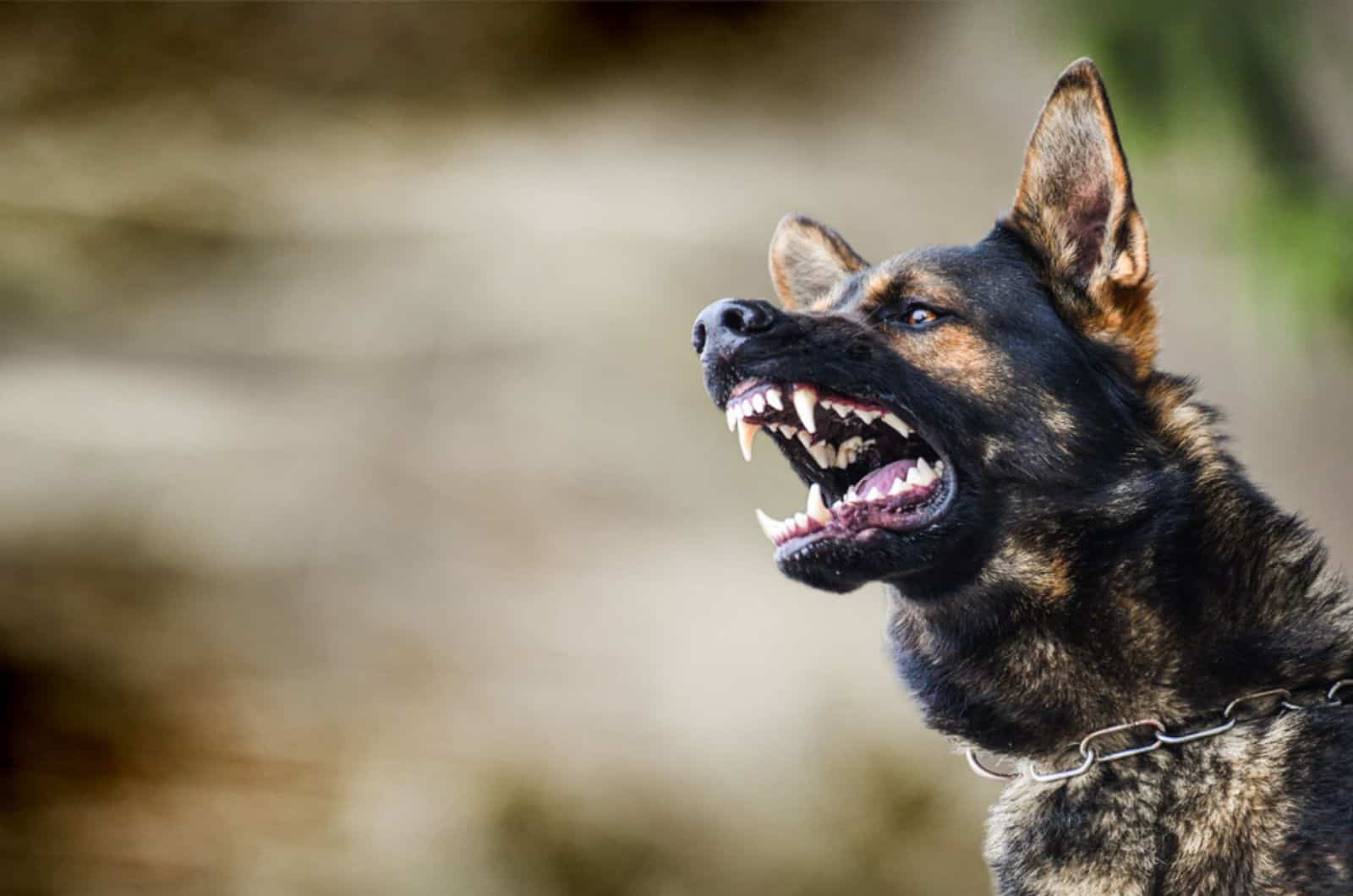
When it comes to fear aggression in German Shepherds, growling and barking can be important vocal clues that your pup is feeling scared and threatened.
It’s his way of expressing his discomfort and attempting to establish boundaries. Rather than a mere barking performance, it’s a serious communication from your pooch that should not be ignored.
This sign, along with the overall body language is very important to recognize, as it is what labels the GSD aggressive and dangerous.
According to the findings of clever researchers, it turns out that a dog’s aggressiveness is like a unique blend of nature and nurture. It’s not just about their weight and skull shape, but also about the type of household they live in, their life history, and even the quirks of their owner like their gender and age (1).
If your loyal companion is speaking up in this manner, it’s time to listen attentively and respond with care.
2. Fierce Nibbling
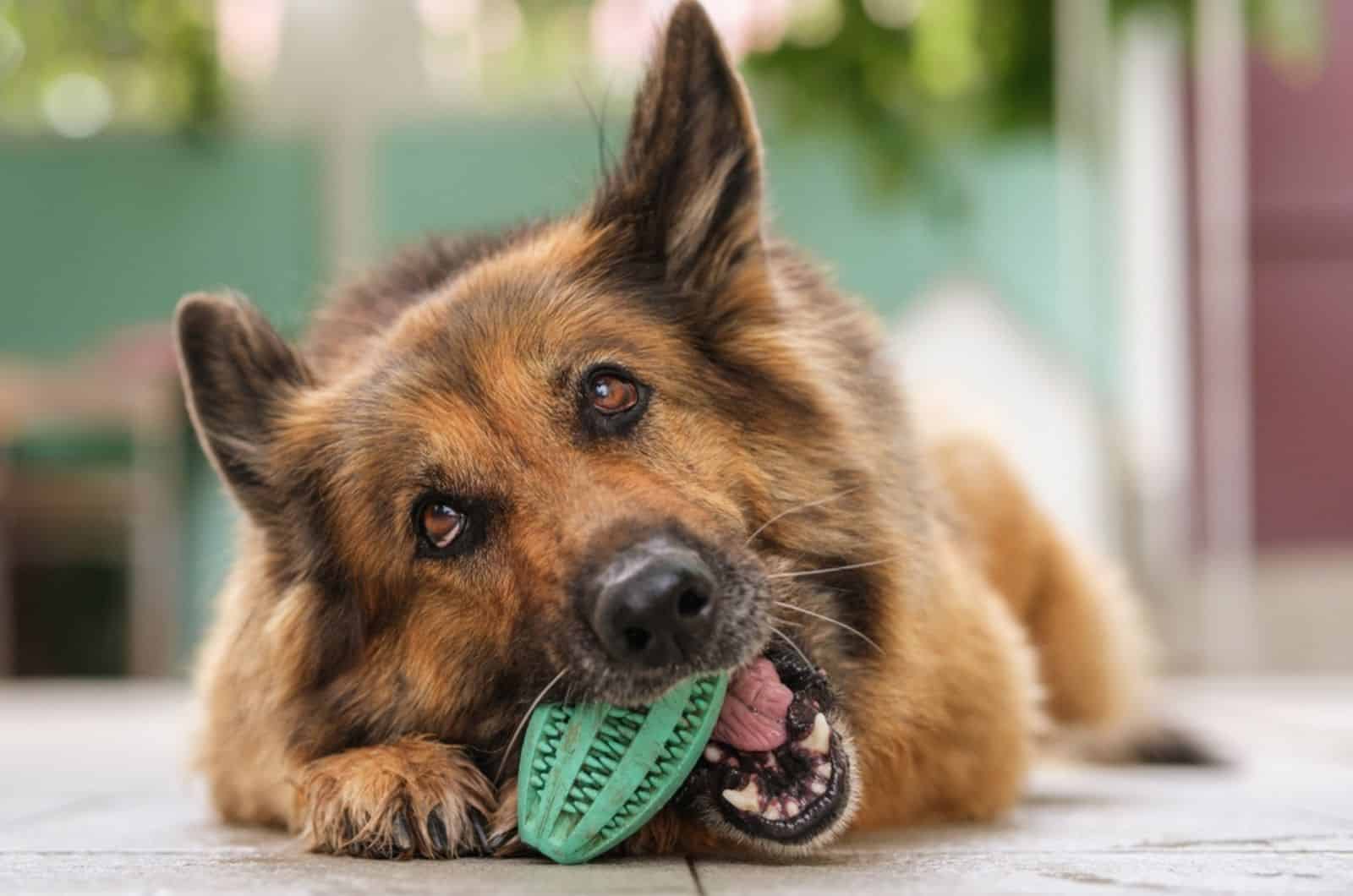
Fierce nibbling, excessive chewing, aggressive nipping – call it what you like, but this common sign of fear aggression in German Shepherds needs to be attended to as soon as possible.
Similar to barking, there’s playful and aggressive GSD nibbling and it’s important to distinguish the two.
Playful mouthing is usually not as painful as aggressive biting. On the other hand, an aggressive dog’s body may be stiff, with a wrinkled muzzle and exposed teeth.
Just like how we might bite our nails when we’re anxious or nervous, dogs may resort to this behavior as a coping mechanism. It’s their way of trying to calm themselves down in a stressful situation, like a security blanket for their teeth!
It may seem harmless at first, but there is a chance that your hand might replace the security blanket one day!
And trust me, you do not want to feel that GSD bite force on you!
3. Excessive Panting
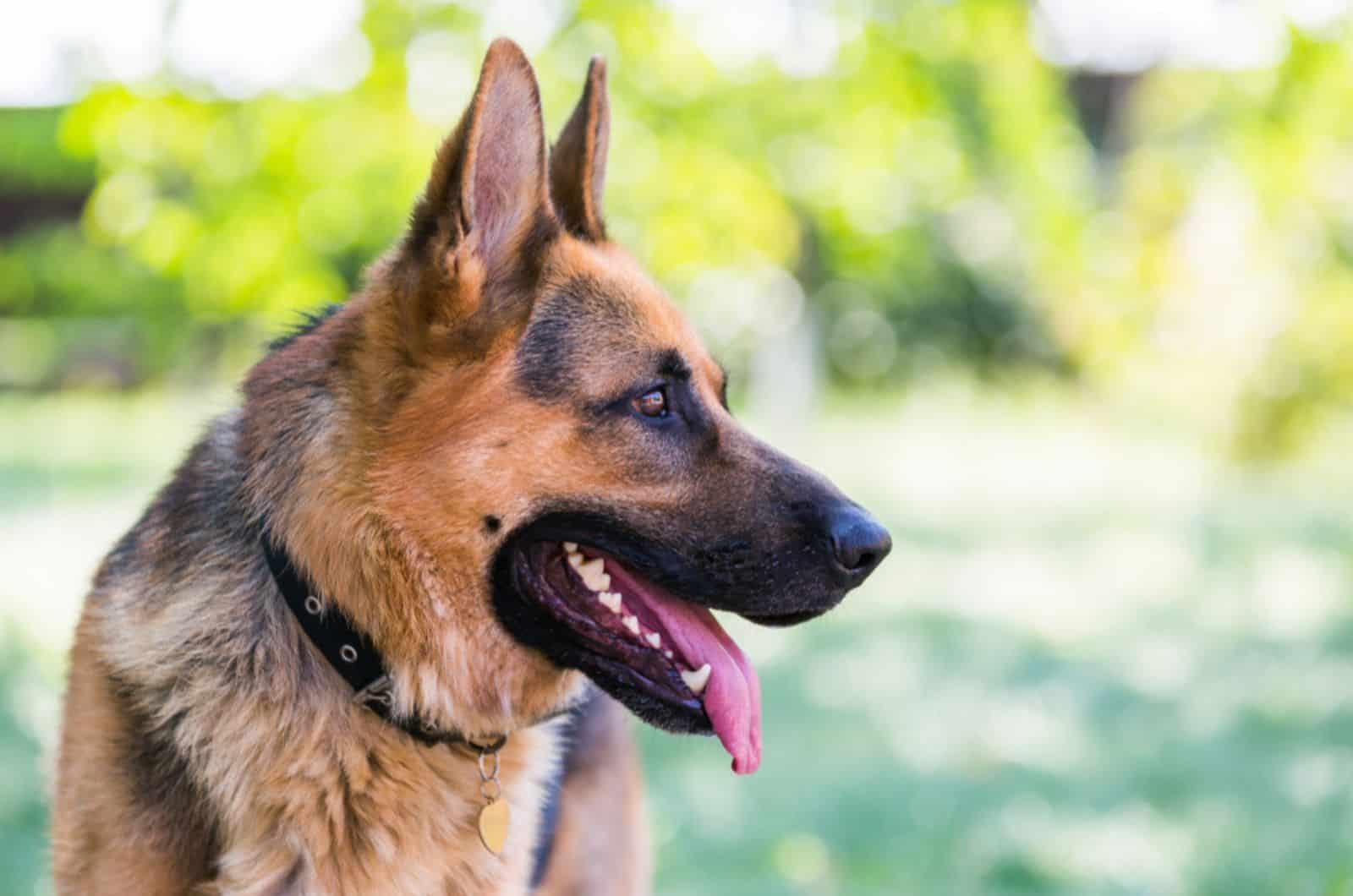
These pups may start panting when they are scared, which could lead some people to mistakenly perceive them as aggressive due to their intense appearance. While that might be the case, owners need to exclude other reasons why their German Shepherd is breathing fast.
You see, panting is a common behavior in all dogs and it can be associated with various emotions, such as excitement, aggression, or anxiety.
For example, during a thunderstorm, you might notice your furry friend panting as he is showing signs of anxiety.
A recent study revealed that when faced with loud noises, dogs show a wide range of behavioral responses that are both amusing and relatable.
These responses can include panting, hiding, pacing, cowering with a lowered body posture, shaking and trembling, barking, attempting to escape or retreat, and seeking comfort from familiar people (2).
4. Body Language
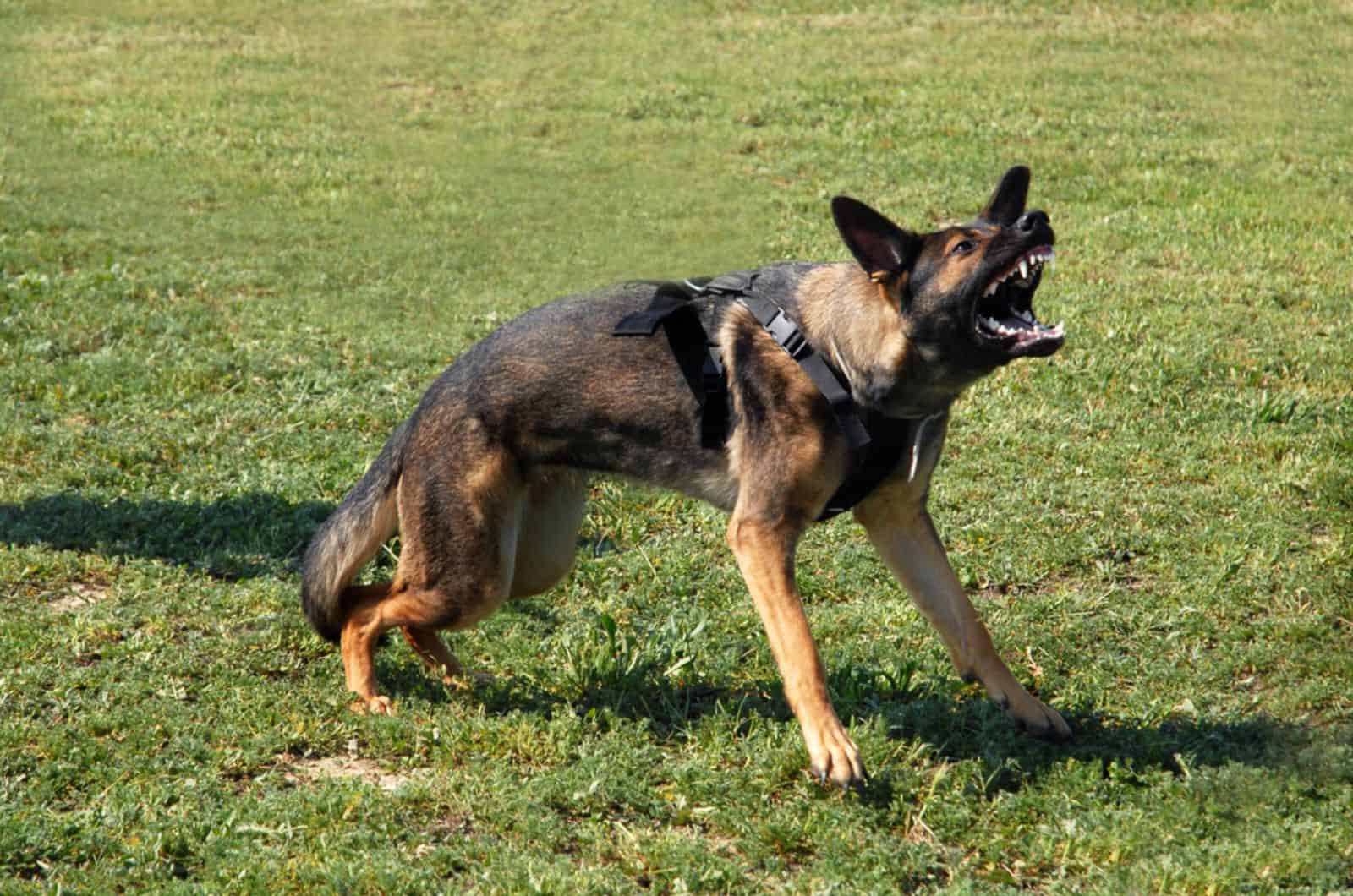
A German Shepherd’s body language can reveal a lot about his emotions, and I mean a lot! Especially when they are feeling anxious and/or scared.
Canines that are showing signs of fear, aggression, dominance, or simply feeling challenged often display wide eyes and upright ears that serve as cues in their body language (3).
Let’s start off with GSD tail positions: a tucked tail or a tail held low between his legs can be a sign of fear or anxiety.
When you look at his eyes, they may appear wide, with dilated pupils, and they may even turn away their gaze to avoid direct eye contact.
Watch out for their hackles, the fur along their back, which may stand up when they are fearful or agitated.
Drooling could also be a giveaway, as some German Shepherds may salivate excessively when they are scared. You may notice that their overall body posture appears stiff, with tense muscles and a rigid stance, indicating their discomfort.
These pooches are incredibly expressive, and paying attention to their body language can provide insights into their emotional state, allowing you to better understand and support them during stressful situations.
5. Lunging Or Snapping
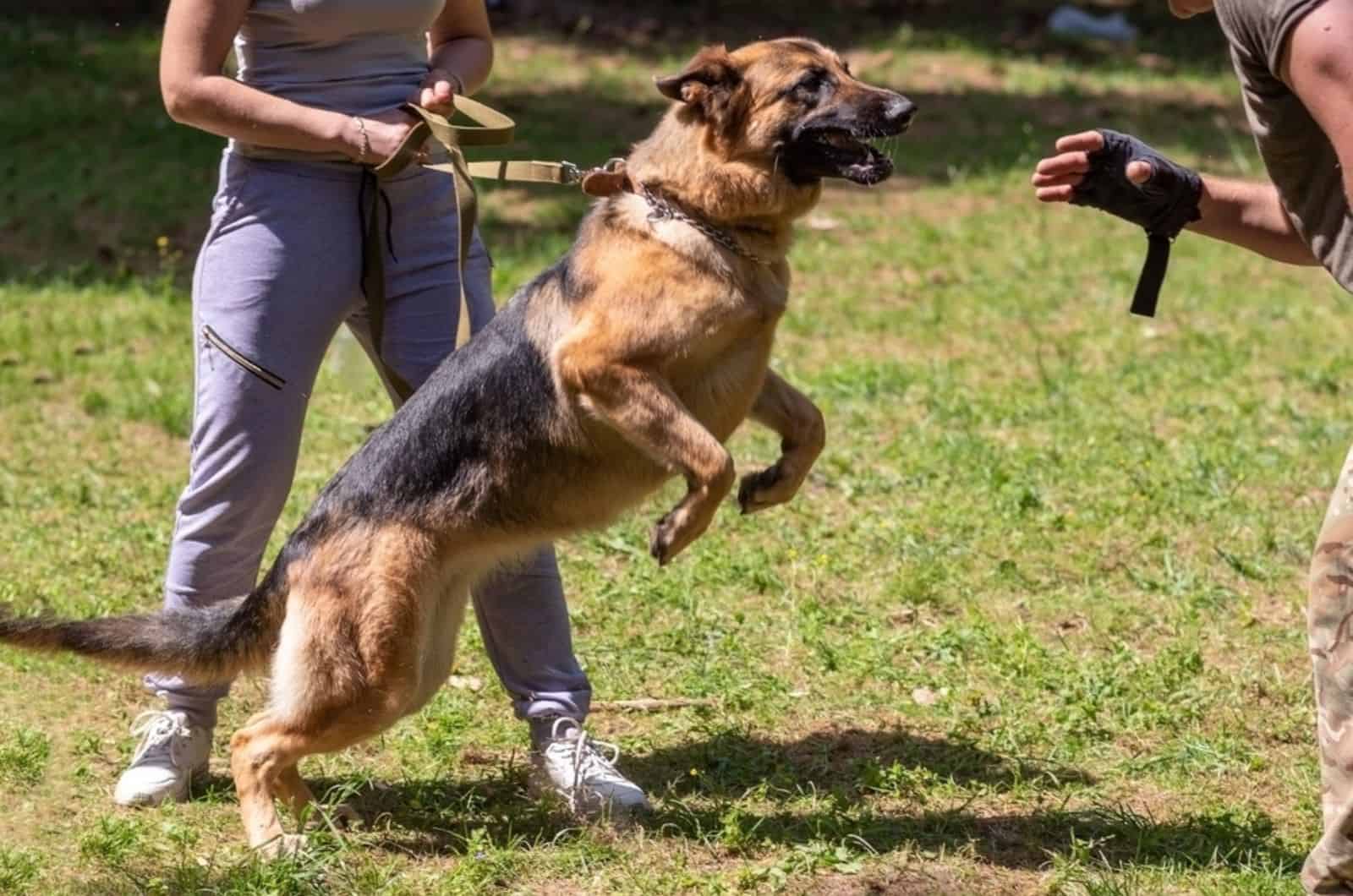
This is the most obvious sign of fear aggression in German Shepherds. What happens here is that, when they feel territorial, these dogs often become stressed or fear-driven. They see approaching animals or humans as intruders in their kingdom.
They may choose to fight or flight, but we all know that German Shepherds almost never back down.
Snapping is their way of saying “enough is enough!” It’s like a warning shot, with growling, teeth showing, or even face licking as the prelude. But if you ignore these signs, things can escalate quickly to a full-blown lunge followed by a bite.
In some cases, if feeling extremely anxious or threatened, GSDs may even turn on their own owners.
This behavior is most likely caused by poor training and lack of socialization.
This is why these dogs may not be the best fit for first-time or inexperienced owners, as they require experienced handling and training.
How Do I Stop My German Shepherd From Being Fear-Based Aggressive?
As proud German Shepherd owners, we know that these clever canines have a strong protective streak in which they may become easily startled.
But with the right approach, we can help them overcome their fear-based aggression.
GSDs require strong leadership and an experienced dog owner who can show dominance when needed. To put it simply, they need an owner who knows what to do in different situations.
1. Early Socialization
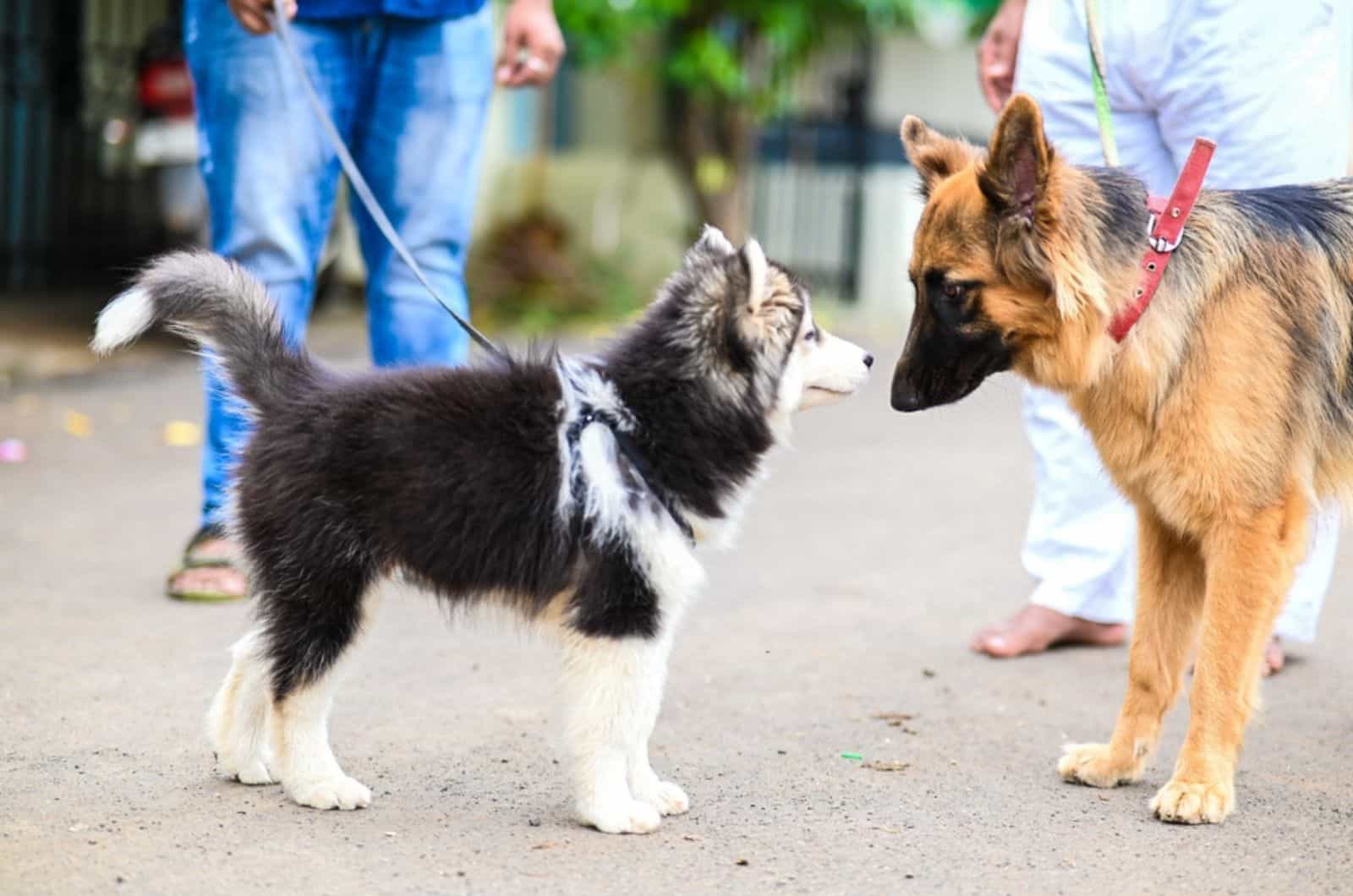
Early socialization is crucial for German Shepherds to develop into well-adjusted and confident dogs. It’s like laying the foundation for their future behavior!
Ideally starting as early as 7 weeks of age, GSD puppies should be exposed to a variety of experiences, including meeting different people, kids, dogs and even cats, as well as being exposed to different environments.
Hey, you can even take your puppy on a hiking trip or even get him a new companion doggo friend!
This early exposure helps them develop positive associations and learn how to properly interact with their surroundings.
Without proper socialization, they may become fearful, and aggressive, and exhibit problematic behaviors (4).
2. Positive Reinforcement Training
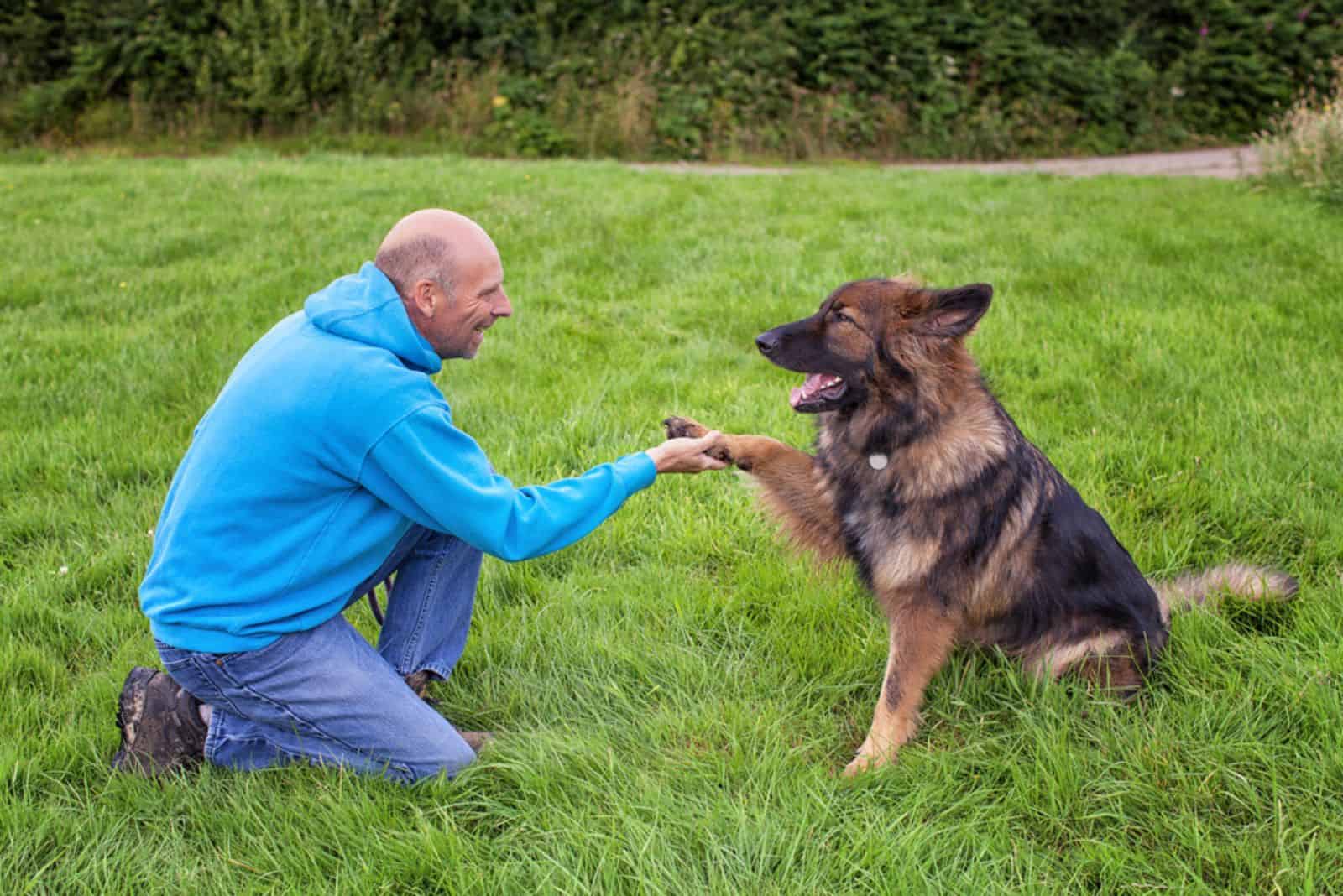
Teaching your German Shepherd buddy new commands can be an exciting and rewarding experience for both of you!
These intelligent canines might come off as hyper as they thrive on mental stimulation and are known for their eagerness to learn and play!
Positive reinforcement training, where you reward desired behaviors, is super effective with these dogs. These good boys love to snack on some yummy treats!
So, the thing about this training is that it really helps to build a strong bond of trust and communication between the two of you. This is very important when it comes to fear-based aggression.
By teaching your German Shepherd new commands and tricks, you can redirect their focus and energy away from fear and anxiety, helping them to become more confident and less reactive in fearful situations.
Make sure to remember that these pups are sensitive, but highly responsive to discipline and thrive in a structured and consistent training environment.
Therefore, you have to avoid harsh punishments and stick to positive reinforcement!
3. Anti-anxiety Products
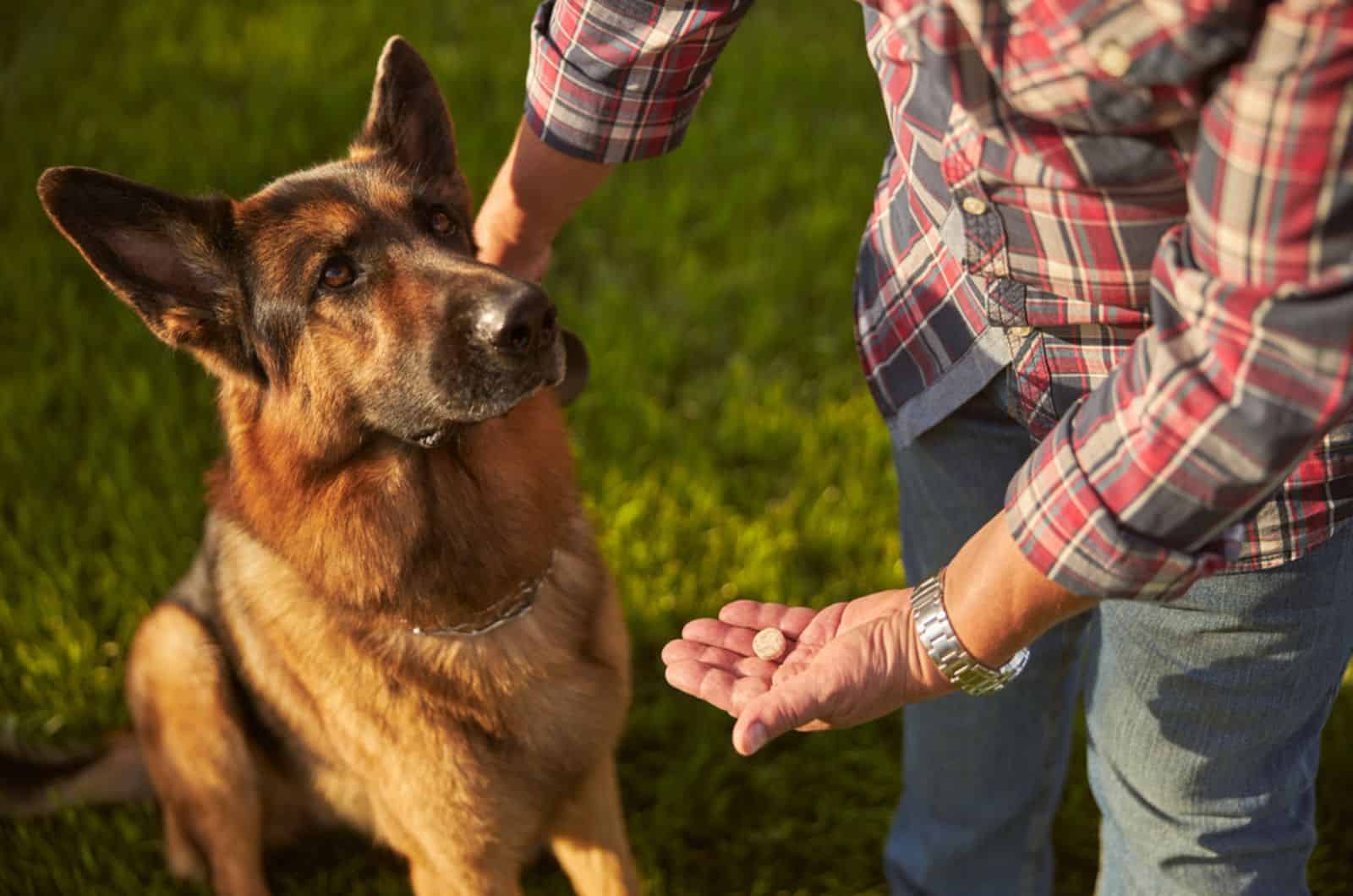
There are several types of anti-anxiety products available, including pheromone diffusers, calming supplements, and anxiety vests.
You can also try calming supplements, such as chamomile or melatonin-based supplements, which can be used to make your anxious German Shepherd more relaxed and chill.
These products can often be purchased at pet supply stores, online, or through your veterinarian.
But, I highly advise you to ask your vet before you make a purchase. Also, do not use these products as an alternative to socialization and training, that’s a no go!
If your German Shepherd’s fear-based aggression is severe or persistent, it’s important to seek professional advice from your veterinarian and certified dog trainer.
Final Thoughts
Fear aggression in German Shepherds can be a challenging behavior to manage, but with the right approach, it’s not something that can’t be corrected or controled!
Early socialization and positive reinforcement training are two most crucial things in helping your GSD feel more confident and less scared.
That’s right, we’re not going to let fear-based aggression get in the way of our pups becoming happy and well-adjusted companions!
References:
1. Tamimi, N., Pirrone, F., Netto, W. J., Miklósi, Á., Learn, A., Duffy, D. L., Casey, R. A., Blackwell, E. J., Ayrosa, F., Arhant, C., Albuquerque, N., Blazina, C., Bognár, Z., Canejo-Teixeira, R., & Careau, V. (2022, October 13). Relationships among morphological, environmental, social factors and aggressive profiles in Brazilian Pet Dogs. Applied Animal Behaviour Science.
2. Grigg, E. K., Chou, J., Parker, E., Gatesy-Davis, A., Clarkson, S. T., & Hart, L. A. (2021, October 18). Stress-related behaviors in companion dogs exposed to common household noises, and owners’ interpretations of their dogs’ behaviors. Frontiers.
3. Abrantes R. Dog Language: An Encyclopedia of Canine Behaviour. Wakan Tanka Publishers; Wenatchee, WA, USA: 1997. pp. 92–251.
4. Howell, T. J., King, T., & Bennett, P. C. (2015, April 29). Puppy parties and beyond: The role of early age socialization practices on adult dog behavior. Veterinary medicine (Auckland, N.Z.).
